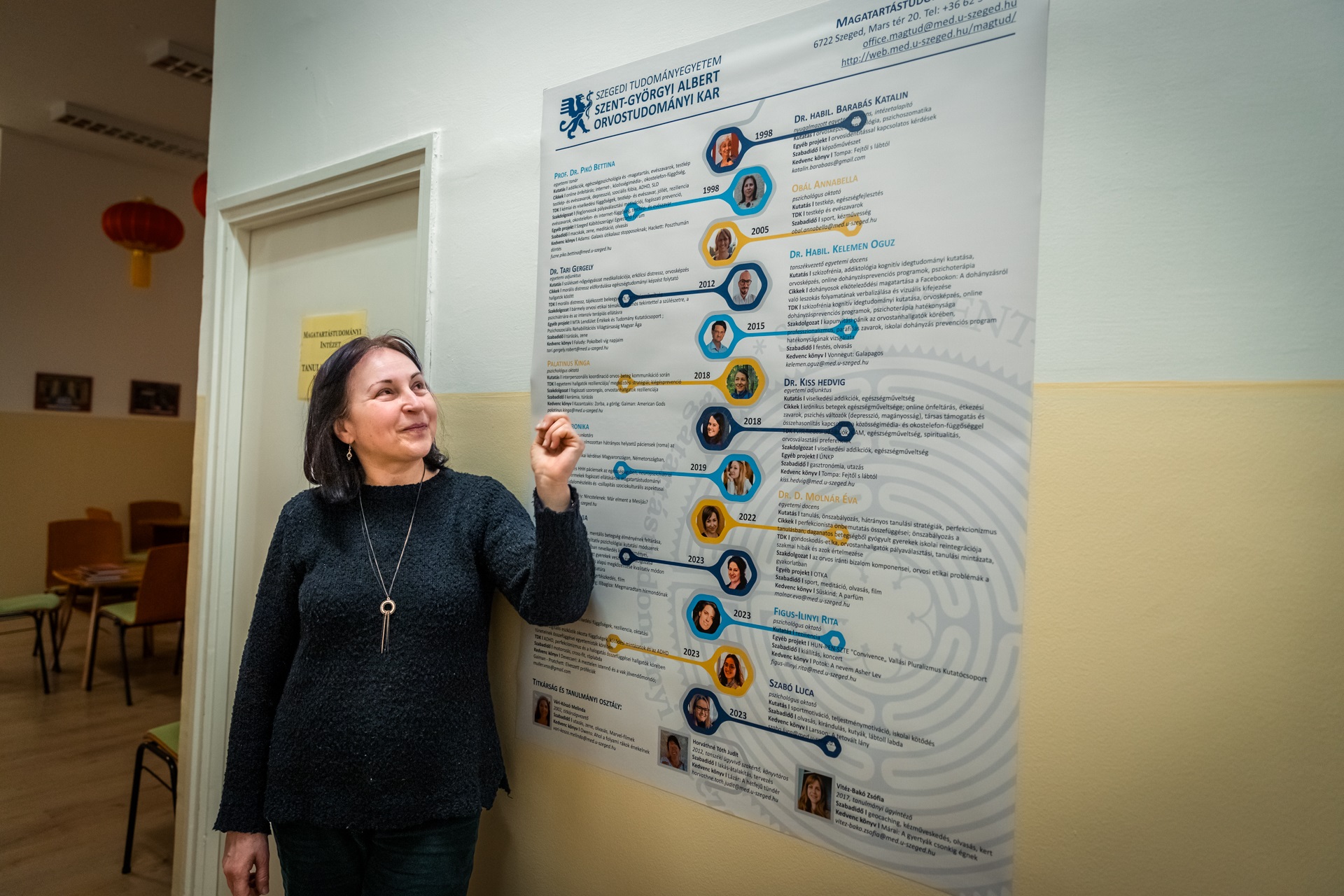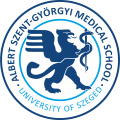University of Szeged
Albert Szent-Györgyi Medical School
Foreign Students' Secretariat
Your Education. Our Mission.

Women Scientists - SZTE Professor Bettina Pikó on the list of the world's leading scholars
Research.com has compiled an international list of the most highly cited scientists in 26 disciplines. 18 Hungarian researchers in the field of psychology, including 1 researcher from the University of Szeged, have made it to the list. The latter one is Bettina Pikó, Professor at the Albert Szent-Györgyi Medical School, SZTE.
On the occasion of the International Day of Women and Girls in Science on 11 February, we asked her about her favourite topics and working methods. The professor, who holds a degree in both medicine and sociology, is the youngest female researcher from Szeged to have earned a place on Research.com's international ranking.
How can a scientist make use of her top ranking?
There are many different rankings to measure research excellence and publications are listed in many different places. They can be used as a benchmark, provide feedback on the effectiveness of previous work, motivate further research and help with networking. This is how I have developed a good working relationship with, for example, Kevin M. Fitzpatrick at the University of Arkansas and Dianna T Kenny at the University of Sydney. I believe that women can also find role models on these lists.

What does the number of 175 English-language publications listed on the research.com list mean for a social scientist in Hungary?
The big dilemma for Hungarian researchers is whether to publish only in English or also in Hungarian. Hungarian researchers tend to give up bilingual publication fast since Hungarian journals and papers are not registered properly, so your publications are practically non-existent. But if we don't publish, we won’t develop the language of science in our mother tongue. In addition, we are letting journals go to waste, such as the journal of the Hungarian Association on Addictions, which was founded in 1993 and discontinued in 2003. I believe that in the scientific field it is important to measure yourself against both national and international scientists and to publish in both English and Hungarian. The topics that I research, such as new developments in the field of public health, should be published in Hungarian as well, so that health educators and teachers can be informed of new findings.

According to research.com, your fields of interest are psychosocial, developmental and clinical psychology, as well as mental health and injury prevention. How has this diversity developed?
I graduated in medicine from the University of Szeged. Then I worked at the Department of Public Health. Later I became interested in research methodology and I earned a second degree in Sociology. I still utilise the knowledge I gained there. I turned to health psychology when I worked together with Mária Kopp.

What is your experience in publishing in the humanities and medicine?
I enjoyed the paradigm shift; it was a great experience for me to study sociology as a doctor at the University of Szeged. I was pleased to find that while in natural sciences a new discovery usually wipes out previous research results, this is not the case in the humanities. For example, the validity of Plato's ideas or Durkheim's results are not necessarily erased by a novel idea or new data, and in this field results build on each other. It was after the political changes in Hungary that humanities scholars were able to enter the international arena. I saw this as an opportunity. In natural sciences, researchers tend to work and publish as a team, but as a health psychologist, I was pleased to learn that people working in social sciences can typically do their own research and publish their results independently, without any co-authors. I enjoy working alone, but I also enjoy seeing my students become my peer researchers.











